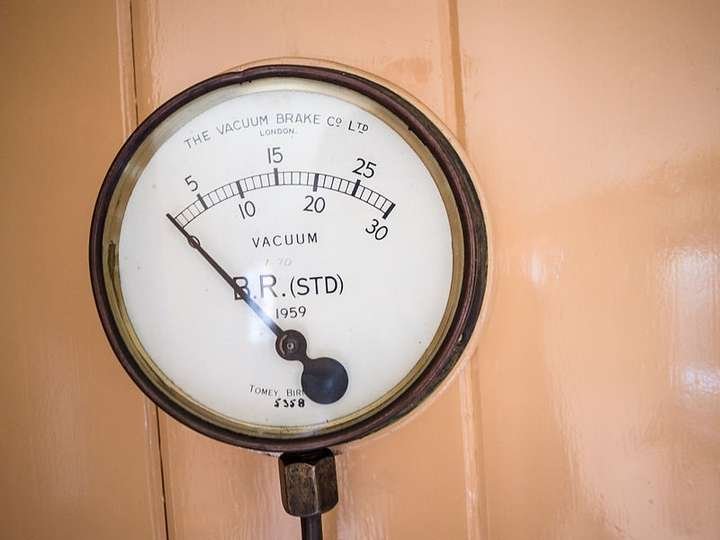Pressure measurement is important for several applications. The tool used for this measurement is known ad vacuum gauges or pressure meters.

Visit https://en.wikipedia.org/ to learn more about pressure measurement. When you have the task of selecting a vacuum gauge, you may think it’s a simple task that you won’t have to think too much about. But you’d soon discover that without using a thoughtful plan, you won’t select the right gauge.
Several elements influence the general performance of vacuum gauges. Every gauge has its accuracy level and operating range. They also have their benefits and drawbacks. Hence, these elements have to be properly considered during your decision-making procedure. When you consider these important factors, you’d end up with the right choice.
1. Vacuum Accuracy and Level
The vacuum level typically is one of the most crucial considerations (if not the most crucial). This is because it affects every other factor since you need a tool that measures according to your specific working pressure. Ranges and classifications include:
- Ultra-high: 10 -9 mbar – 10 -12 mbar
- High: 10 -3 mbar – 10 -9 mbar
- Medium: 1 mbar – 10 -3 mbar
- Rough vacuum: this is typically above atmosphere and 1 mbar
Different technologies are needed to get different pressure ranges. Based on your target level, a combination of gauges may be needed to make measurements across several ranges.
Rough and medium gauges have several options (both indirect and direct ones). So, you have to know the requirements of the process to help you select the right one. High/ultra-high gauges have relatively fewer options. These options are usually cold cathode and hot cathode; both of them are indirect.
Generally, gauges that operate at rough and medium levels have relatively higher accuracy. Also, indirect gauges aren’t as accurate as direct ones. Therefore, you have to choose the desired operating pressure and accuracy based on what the tool is needed for.
2. Application or Process Impact on the Gauge
You have to consider the way the gauge will be impacted during application to help you choose one that would be better suited for the process. The impact the following will potential make has to be carefully evaluated:
- Electric and magnetic fields
- X-ray or particle radiation
- Vibrations
- Frequent venting
- Corrosive gases such as acidic mixtures or chlorine
- Debris or dust produced during the process
For instance, the Pirani gauge is best suited for several medium and rough vacuum applications like:
- Process engineering
- Freeze drying
- Coating and industrial activities
- Analytical instruments. Click here to learn more about analytical instruments
- Research
On the flip side, the capacitance gauge offers higher accuracy. However, the higher accuracy makes this tool more expensive, its focused measurement range is also more. Therefore, you need to be sure of what you need from the measuring system so you can select a tool accordingly.

3. Interface into the System
All vacuum gauges typically output signals. But sometimes, knowing the best signal can be quite challenging. Most applications make use of 0-10 signals. This usually can be turned into pressure via an easy equation. This method of setting systems relatively requires low effort, although 4-20 mA output is used in certain industrial applications.
But with the growing need for large data collection, it’s commonplace to get the protocols for digital communication directly on gauges, rather than through hub converters.
4. Maintenance and Cost
As we have already said, knowing the pressure to be measured is vital. However, we are sure you have a budget. While you may desire 0.1 percent accuracy, you may be able to get 1 percent accuracy for ½ the price of a 0.1 percent accuracy tool. Therefore, you need to properly analyze what you need exactly to monitor and operate the system.
Pressure range and accuracy are what significantly affect the gauge’s cost.
- Pressure range – to offer a wider range, 2 types of gauge might be combined or integrated in 1 tool. This often makes the tool more expensive
- Accuracy – As we have earlier said, how accurate the gauge is influences its cost. The more accurate the vacuum pressure gauge is, the more expensive it will be. For instance, medium and rough capacitance gauges are typically more expensive when compared to piezo gauges.
Conclusion
Choosing the perfect gauge is important to ensure it does a perfect job. To choose the right tool, you need to have an ample understanding of the vacuum levels as well as your process requirements. Maintenance, cost, gauge accuracy, and impact on the chosen gauge are other factors that must be considered. There are so many options and we know all these may sound challenging, however, carefully analyzing these factors will help you to narrow down the options and select the perfect one.





